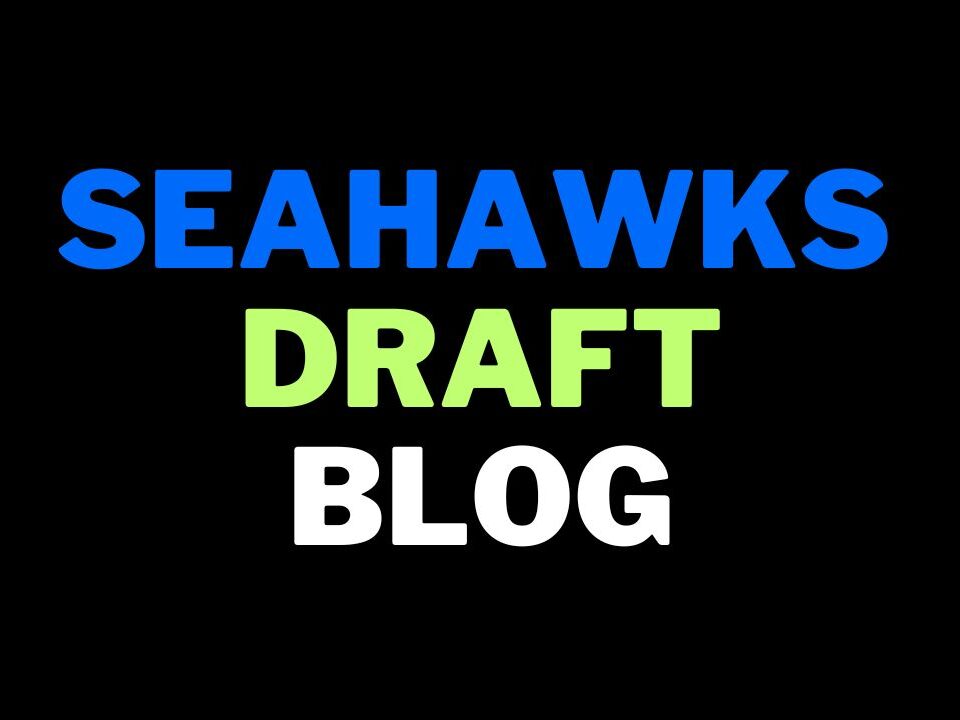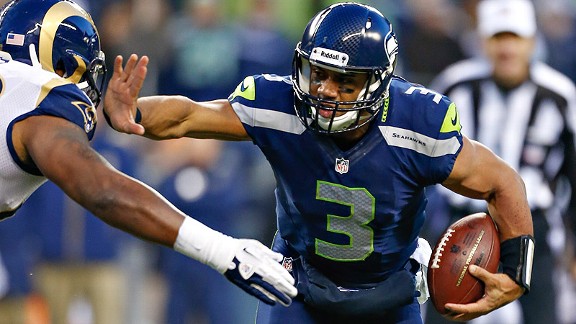
Can you be too big in Seattle's scheme?
No trades in the mock this week (just to mix things up a bit). As noted yesterday, I think we’ll see a ton of first round deals on April 25th so take this with a grain of salt (you possibly already do). I’ve tried to think outside of the box and make a few surprise choices.
It’s been revealed the following players will be attending the draft in New York: Luke Joeckel, Geno Smith, E.J. Manuel, Chance Warmack, Bjoern Werner, Jonathan Cooper, Sharrif Floyd, Lane Johnson, Ziggy Ansah, Kenny Vaccaro, D.J. Fluker, Eric Fisher, Menelik Watson, Cordarrelle Patterson, Tavon Austin, Xavier Rhodes, Margus Hunt, Barkevious Mingo and Dee Milliner. Dion Jordan is still considering his invite.
I remain perplexed, confused and intrigued by what Seattle is going to do at #56. It seems like nothing is off the table. In fact, looking at the options available for round three, it wouldn’t surprise me if they traded out of the second round. In the end I went with a big defensive tackle who’s one of those players who could easily go in round one or round three. John Jenkins is massive. He’s also pretty agile for his size. However, his tape is inconsistent and the big question is will that inconsistency improve in a situation where you can better manage his snaps? Seattle appears to want size at tackle. Big early, tough to run against, then unleash the hounds. That seems to be the aim here. Jenkins would fit into that.
Whether a guy at 6-4 and around 340 is the answer, I’m not sure. They seem to prefer length and decent size, instead of those enormous nose tackle types. Alan Branch, Tony McDaniel — both big tackles, but not 340lbs. I was tempted to go for Kyle Long as a player capable of playing both guard and tackle.
If you missed it earlier, make sure you check out Kip’s piece on quarterback options for Seattle in the draft.
I also want to remind everyone that you can now purchase Seattle’s new ‘draft cap’ through Seahawks Draft Blog by clicking the image below. Help the blog and support the Seahawks during ‘draft month’.
First round
 |
#1 Luke Joeckel (T, Texas A&M) Still seems the most likely pick. |
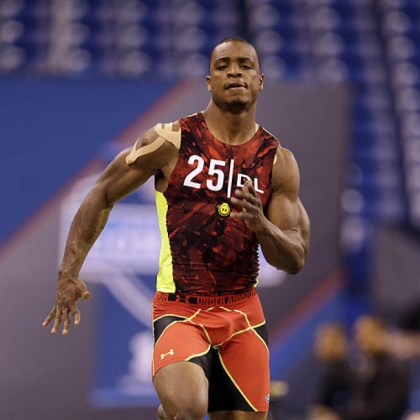 |
#2 Dion Jordan (DE, Oregon) They need a pass rusher. Pure and simple. |
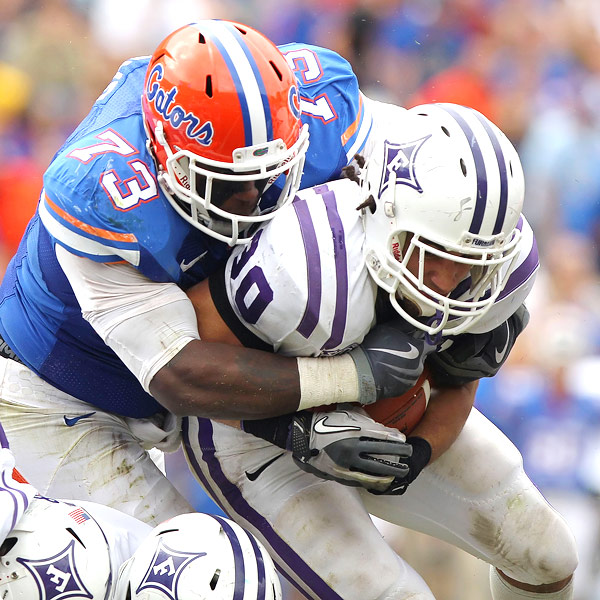 |
#3 Sharrif Floyd (DT, Florida) This will be a long rebuild. |
 |
#4 Tavon Austin (WR, West Virginia) I just have a hunch someone will fall in love with Austin enough to make him a higher pick than we expect. |
 |
#5 Eric Fisher (T, Central Michigan) Fills a need at left tackle. Could be Dee Milliner here. |
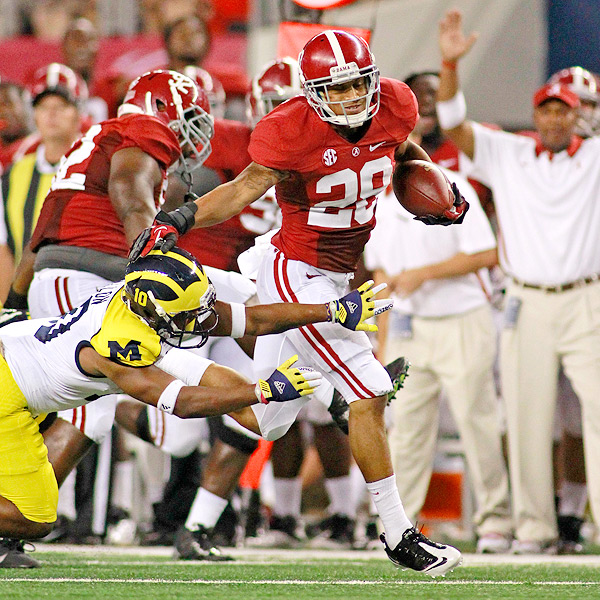 |
#6 Dee Milliner (CB, Alabama) If they get Milliner, they can feel pretty good about this off-season. |
 |
#7 Lane Johnson (T, Oklahoma) This is far and away the teams biggest need following the Carson Palmer trade. |
 |
#8 Geno Smith (QB, West Virginia) They could move up to make sure they get Smith. They can’t rely on Kevin Kolb. |
 |
#9 Ziggy Ansah (DE, BYU) He could line up in multiple looks for Rex Ryan. |
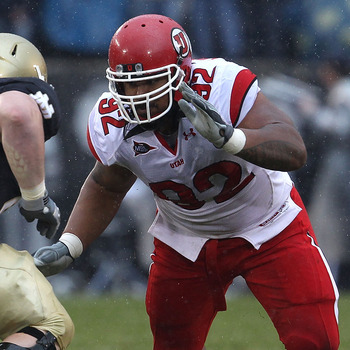 |
#10 Star Lotulelei (DT, Utah) He’s been cleared medically. |
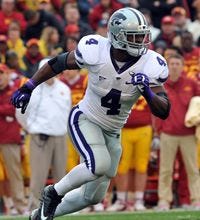 |
#11 Arthur Brown (LB, Kansas State) Again, another hunch. Brown could go earlier than we think. |
 |
#12 Chance Warmack (G, Alabama) With the top tackles off the board, why not take Warmack? |
 |
#13 Blidi Wreh-Wilson (CB, Connecticut) One way or another, I think the Buccs end up with Darrelle Revis. |
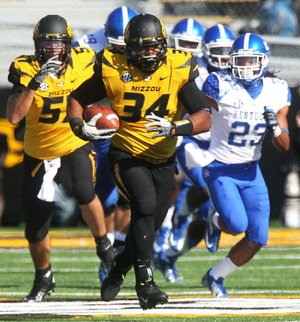 |
#14 Sheldon Richardson (DT, Missouri) Flat out steal if it happens. |
 |
#15 Datone Jones (DE, UCLA) Athletic potential could = top 15. |
 |
#16 Jonathan Cooper (G, North Carolina) Tremendous player, who could feature at guard or center. |
 |
#17 Kenny Vaccaro (S, Texas) A good fit for both parties. |
 |
#18 Cordarrelle Patterson (WR, Tennessee) They just signed Tony Romo to a mega deal. Giving him Dez Bryant and Cordarrelle Patterson to throw to would be fun. |
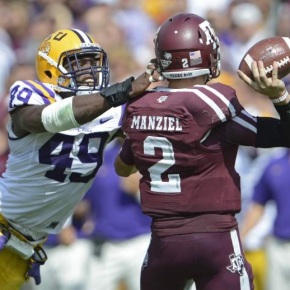 |
#19 Barkevious Mingo (DE, LSU) He could fall further than this. |
 |
#20 Alec Ogletree (LB, Georgia) Fills a need. Athletic potential could make this a steal. Character concerns linger. |
 |
#21 D.J. Fluker (T, Alabama) I’m not a fan personally, but then I was never really a fan of Andre Smith either. |
 |
#22 Robert Woods (WR, USC) If they’re looking for a weapon on offense, Woods could be in play. |
 |
#23 Bjoern Werner (DE, Florida State) He’s good but is he special enough to go earlier? |
 |
#24 Justin Pugh (G, Syracuse) A huge need for the Colts. |
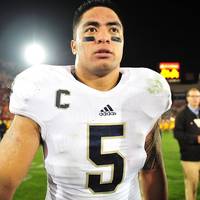 |
#25 Manti Te’o (LB, Notre Dame) They hit on Rudolph and Harrison, so why not go back to the Notre Dame well? |
 |
#26 Tyler Eifert (TE, Notre Dame) Donald Driver’s retired, Greg Jennings is in Minnesota. They could go for a pass catcher here. |
| #27 Keenan Allen (WR, Houston) Receiver looks like a strong option here. |
|
 |
#28 Matt Elam (S, Florida) He did well enough at the combine to warrant a place in round one. |
 |
#29 Jamar Taylor (CB, Boise State) Gives off a Bill Belichick-pick vibe. |
| #30 Tank Carradine (DE, Florida State) He hopes to work out on April 20th. |
|
 |
#31 Jonathan Cyprien (S, Florida International) Safety is a key need for the Niners. |
 |
#32 Xavier Rhodes (CB, Florida State) The Ravens often look for value, rather than simply filling needs. |
Second round
#33 Jacksonville – Matt Barkley (QB, USC)
#34 San Francisco – Johnathan Hankins (DT, Ohio State)
#35 Philadelphia – E.J. Manuel (QB, Florida State)
#36 Detroit – Desmond Trufant (CB, Washington)
#37 Cincinnati – Jonathan Franklin (RB, UCLA
#38 Arizona – Zach Ertz (TE, Stanford)
#39 New York Jets – Matt Scott (QB, Arizona)
#40 Tennessee – Johnthan Banks (CB, Mississippi State)
#41 Buffalo – Margus Hunt (DE, SMU)
#42 Miami – D.J. Hayden (CB, Houston)
#43 Tampa Bay – Gavin Escobar (TE, San Diego State)
#44 Carolina – DeAndre Hopkins (WR, Clemson)
#45 San Diego – Menelik Watson (T, Florida State)
#46 St. Louis – Eddie Lacy (RB, Alabama)
#47 Dallas – Travis Frederick (C, Wisconsin)
#48 Pittsburgh – Jarvis Jones (LB, Georgia)
#49 New York Giants – Khaseem Greene (LB, Rutgers)
#50 Chicago – Larry Warford (G, Kentucky)
#51 Washington – Justin Hunter (WR, Tennessee)
#52 Minnesota – Sylvester Williams (DT, North Carolina)
#53 Cincinnati – Eric Reid (S, LSU)
#54 Miami – Corey Lemonier (DE, Auburn)
#55 Green Bay – Christine Michael (RB, Texas A&M)
#56 Seattle – John Jenkins (DT, Georgia)
#57 Houston – Ryan Nassib (QB, Syracuse)
#58 Denver – Denard Robinson (RB, Michigan)
#59 New England – Kevin Minter (LB, LSU)
#60 Atlanta – Kyle Long (G, Oregon)
#61 San Francisco – Jesse Williams (DT, Alabama)
#62 Baltimore – Jamie Collins (LB, Southern Miss)
